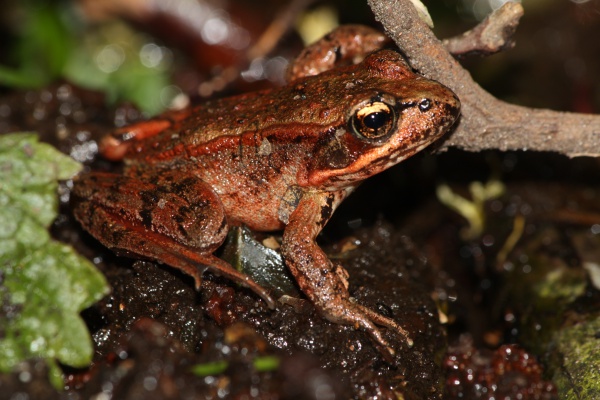Facts About Red-legged Frog
The Northern Red-Legged Frog is a protected amphibian species found along the coast from southwestern British Columbia down to southern Mendocino County in Northern California. Belonging to the Rana genus, these frogs are known for their smooth skin, narrow waists, and long, powerful legs that enable them to be excellent jumpers. They require still waters for breeding, so they are often found near ponds or marshes.
Adult Northern Red-Legged Frogs can grow up to 8 cm in length. They have distinctive dark facial masks and light stripes along their jawlines. Predominantly found in the Pacific Northwest and the coastal areas of California, they favor coastal mountain ranges below 1,200 meters in elevation. Their habitats generally include ponds, marshes, and stream pools with abundant shoreline vegetation to provide cover from predators.
The breeding season for these frogs extends from October to January, requiring stable temperatures between 42 and 44 °F. Males defend territories within breeding ponds and initiate courtship in January in California, with later starts in more northern regions. Females lay between 200 and 1,100 eggs per season, anchoring them to submerged plants. These eggs hatch in approximately 39 to 45 days, and the tadpoles take around 80 days to metamorphose into frogs.
Breeding sites are typically shallow, densely vegetated wetlands with minimal current. Egg masses can be found at various depths. By late May or early June in Northern California, most of the tadpoles have completed metamorphosis. Breeding commences when water temperatures rise above 6°C, usually in January, but it can extend as late as March in the northern parts of their range.

 Belize
Belize